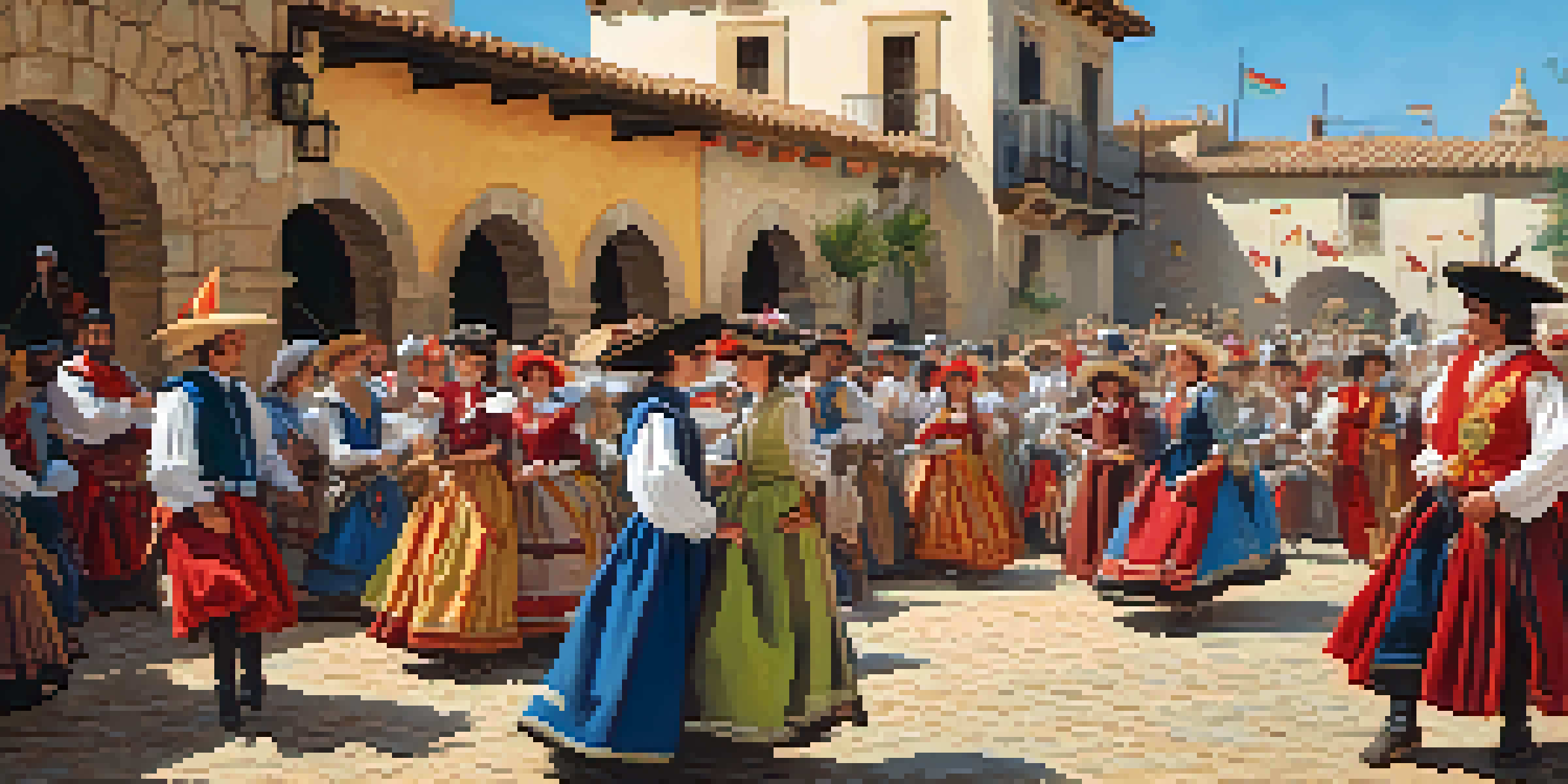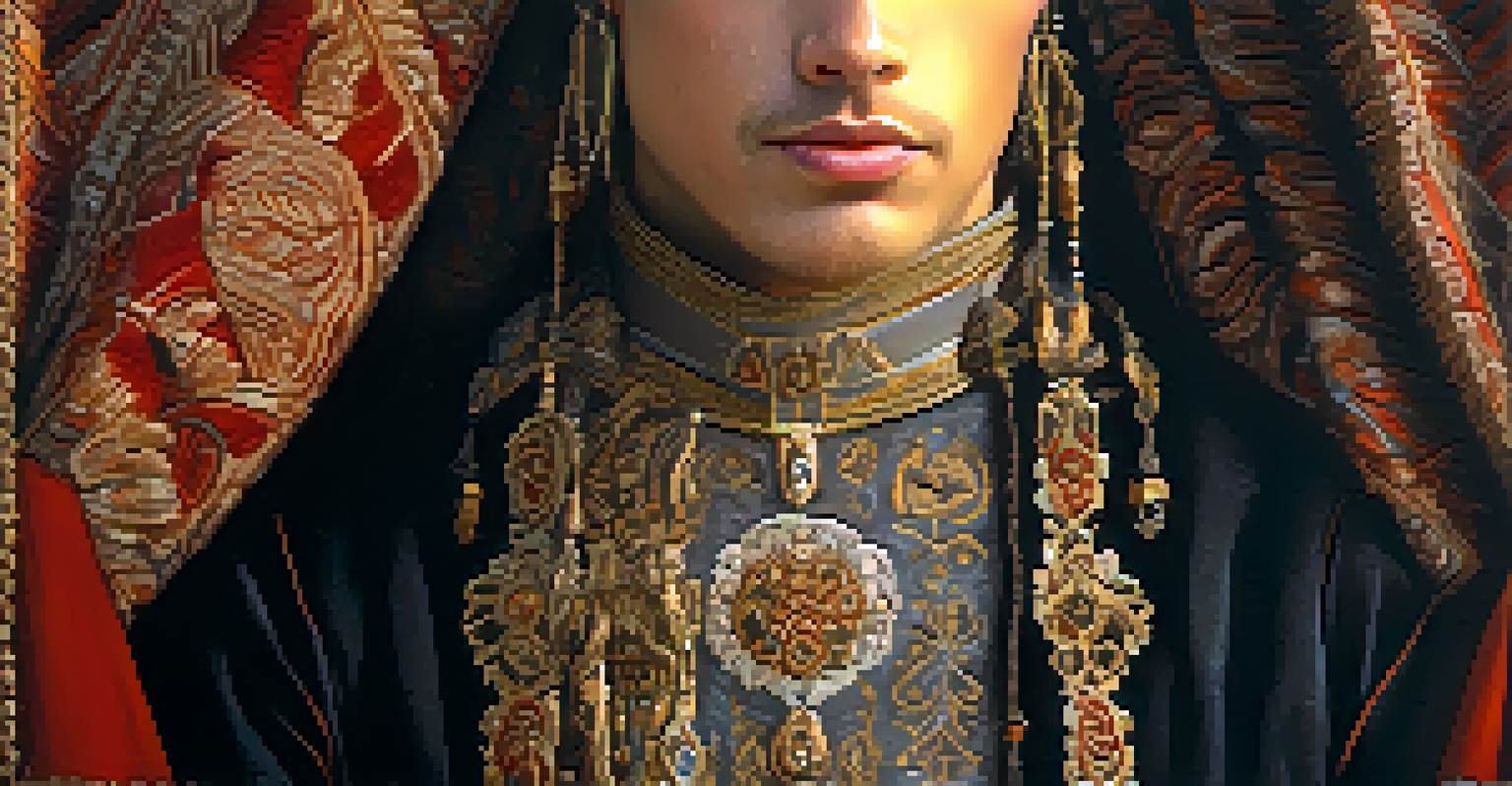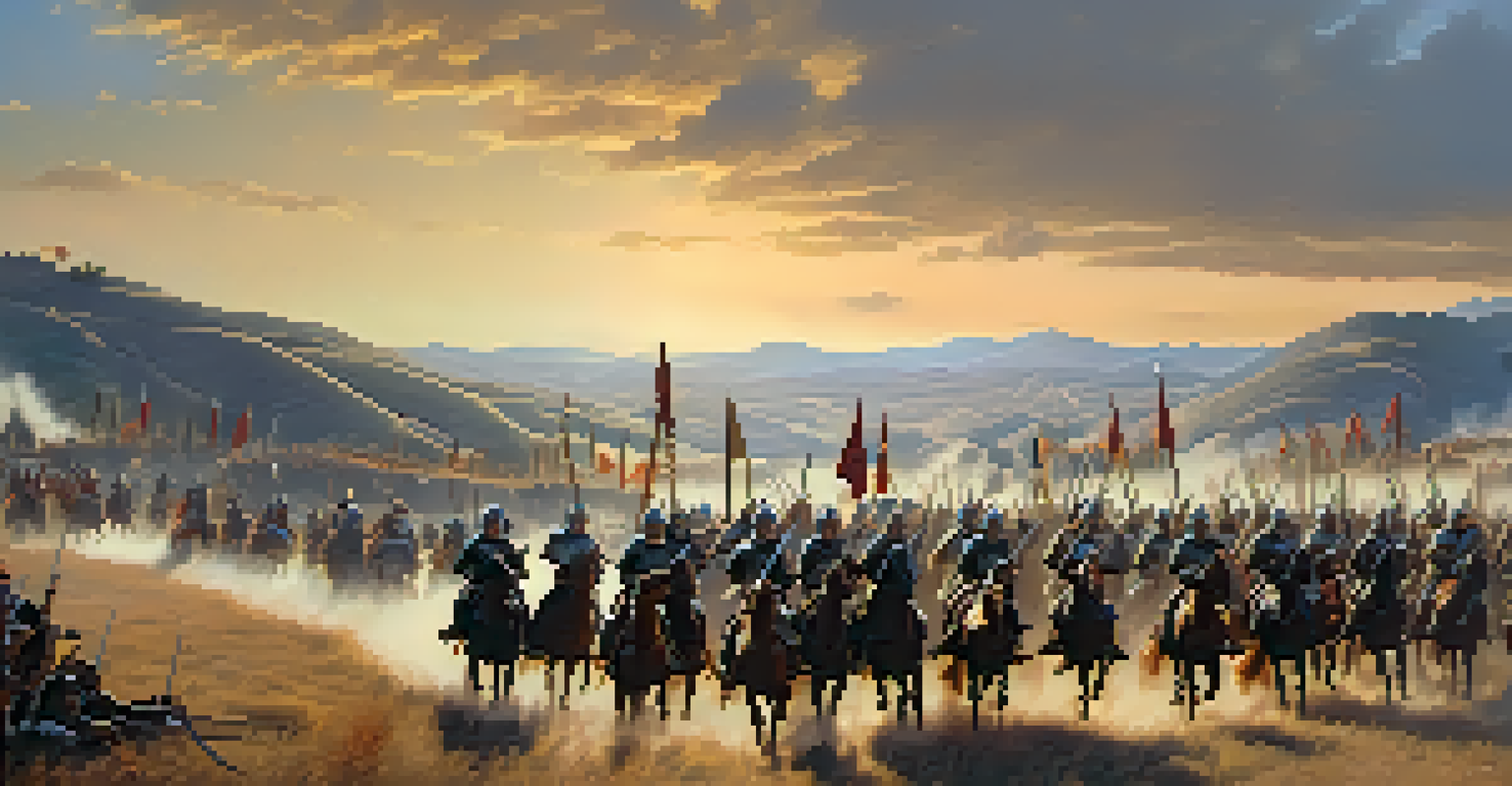Spain's Historical Reenactments: A Gateway to Understanding Culture

Introduction to Spain's Rich Historical Tapestry
Spain is a country steeped in history, where every stone and street tells a story. From the Moors to the Reconquista, the influences of various cultures are woven into the fabric of Spanish society. Historical reenactments serve as living museums, allowing people to experience these stories firsthand.
History is not a burden on the memory but an illumination of the soul.
These events provide a unique opportunity to not only witness history but to engage with it. Participants dress in period costumes and reenact significant events, making history come alive in a vibrant, dynamic way. This immersive experience captivates both locals and visitors alike, fostering a deeper appreciation for Spain's past.
In this article, we will explore the various historical reenactments in Spain, their significance, and how they connect us to the rich tapestry of Spanish culture. Whether you're a history buff or just curious, there's something here for everyone.
The Role of Historical Reenactments in Spanish Culture
Historical reenactments in Spain are more than just performances; they serve as a cultural bridge linking the past to the present. These events help preserve traditions that might otherwise fade into obscurity, ensuring the stories of ancestors are passed down through generations.

For many communities, these reenactments are a source of pride and identity. They provide an opportunity for local residents to showcase their heritage and share it with others, creating a sense of belonging. This communal aspect fosters unity and strengthens community ties, as everyone works together to bring history to life.
Cultural Importance of Reenactments
Historical reenactments serve as a cultural bridge, preserving traditions and fostering community identity.
Moreover, these events often attract tourists, contributing to the local economy. Visitors come to experience the spectacle, learn about the history, and engage with local culture, all of which highlights the importance of preserving these traditions.
Major Historical Reenactments Across Spain
Spain hosts a variety of historical reenactments throughout the year, each highlighting different aspects of its rich heritage. For example, the Battle of Las Navas de Tolosa commemorates the pivotal 1212 battle between Christian and Muslim forces. This reenactment draws large crowds and vividly illustrates the country's medieval past.
Those who cannot remember the past are condemned to repeat it.
Another notable event is the Siege of Baza, which takes place in Granada. Participants recreate the dramatic events of the 1489 siege, showcasing the struggles and triumphs of the time. Such reenactments not only entertain but also educate audiences about the complexities of Spain's history.
These events often include parades, traditional music, and local cuisine, turning them into comprehensive cultural experiences. They invite everyone to participate, ensuring that history is accessible to all.
The Impact of Historical Reenactments on Education
Historical reenactments serve as powerful educational tools, making history tangible and relatable. Students and educators alike find that engaging with history through reenactments can enhance learning, as participants remember experiences better than textbook facts.
Many schools and universities in Spain incorporate field trips to these events, allowing students to see history in action. This hands-on approach encourages critical thinking as students analyze events from multiple perspectives, understanding the complexities of historical narratives.
Educational Benefits of Reenactments
These events enhance learning by making history tangible and encouraging critical thinking among participants.
Moreover, these reenactments can spark interest in history, inspiring young people to delve deeper into their heritage. By blending entertainment with education, historical reenactments create a unique learning environment.
Challenges Facing Historical Reenactments Today
While historical reenactments are cherished, they face several challenges in the modern world. One significant issue is the balance between authenticity and entertainment. Organizers often grapple with how to present history in an engaging way without sacrificing accuracy.
Another challenge is the need for funding and resources. Many reenactments rely on local support and sponsorship, which can be inconsistent. This financial strain can limit the scope and quality of events, making it difficult to maintain high standards.
Additionally, as society evolves, some reenactments face scrutiny regarding their portrayal of history. It’s crucial for organizers to navigate these sensitivities while honoring the past, ensuring that the reenactments remain respectful and inclusive.
How to Get Involved in Historical Reenactments
If you're interested in participating in historical reenactments, there are several ways to get involved. Many communities hold open calls for volunteers, welcoming individuals of all ages and backgrounds to join in the fun. Whether you want to act, help with costumes, or assist in organization, there’s a role for everyone.
Joining a reenactment group can also be a fantastic way to meet like-minded history enthusiasts. These groups often provide training and resources, helping you learn more about the era you're portraying. Plus, it's a great opportunity to make friends who share your passion for history.
Challenges Facing Reenactments Today
Authenticity, funding, and evolving societal perspectives are significant challenges that historical reenactments must navigate.
Lastly, attending these events as a spectator is a wonderful way to start. By immersing yourself in the experience, you can decide if you’d like to take the plunge into reenacting yourself!
Conclusion: Embracing Spain's Historical Legacy
Spain's historical reenactments are a vibrant celebration of its rich cultural heritage. They not only preserve historical narratives but also foster community engagement and education. Through these events, we connect with the past in meaningful ways, gaining insights into the values and traditions that shape modern Spain.
By participating in or attending these reenactments, you become part of a larger story, one that spans centuries and transcends borders. These events invite everyone to explore history actively, making it accessible and engaging.

As we embrace these historical experiences, we honor the legacy of those who came before us, ensuring that their stories continue to resonate for generations to come.